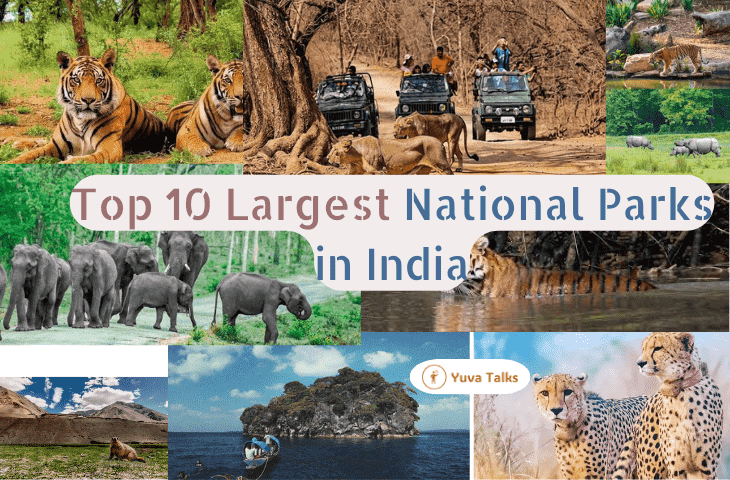India’s national parks offer a window into the country’s diverse and vibrant ecosystems, ranging from the towering Himalayas and the lush Western Ghats to expansive plains. Among these, the most notable are Jim Corbett National Park, Kaziranga National Park, Sundarbans National Park, and Gir National Park. Notably, Jim Corbett National Park holds the distinction of being India’s first national park. Hemis National Park is the largest in the country, while South Button Island National Park is the smallest.
With 106 national parks spread across the nation, each one presents its unique beauty and biodiversity, making India a truly remarkable destination for nature lovers. This article highlights the top 10 national parks in India, including the largest and smallest, showcasing the natural splendor that defines the country’s rich environmental heritage.
A national park is a specific area of land that the government designates for the preservation and protection of its distinctive natural and cultural features. These parks are created primarily to safeguard biodiversity, maintain ecological balance, and promote the sustainable use of natural resources. In India, national parks are vital sanctuaries for diverse plant and animal species, including many that are endangered.
Also Read:- Top 10 Deadliest Natural Disasters in Japan
List of Top 10 National Parks in India
From Gir Forest in Gujarat to Sundarbans in West Bengal, these parks are like nature’s treasure chests. They help protect our environment and showcase the incredible variety of life in India.
Among 106 national parks, the list of the top 10 national parks in India is in the following table along with their state, area, and year of establishment:
| National Park Name | State | Area(in sq km) | Year of Establishment |
| Hemis National Park | Ladakh | 4400 sq km | 1981 |
| Sundarbans National Park | West Bengal | 2585 sq km | 1984 |
| Kanha National Park | Madhya Pradesh | 940 sq km | 1955 |
| Sariska National Park | Rajasthan | 881 sq km | 1955 |
| Bandipur National Park | Karnataka | 872 sq km | 1974 |
| Kuno National Park | Madhya Pradesh | 750 sq km | 1981 |
| Jim Corbett National Park | Uttarakhand | 521 sq km | 1936 |
| Gir National Park | Gujarat | 500 sq km | 1965 |
| Kaziranga National Park | Assam | 430 sq km | 1905 |
| South Button Island National Park | Andaman and Nicobar | 5 sq km | 1987 |
Largest National Park in India – Hemis National Park
India is home to numerous national parks, but the largest among them is Hemis National Park. Spanning an area of 4,400 square kilometers, this vast expanse is located in Ladakh and is encircled by towering mountains. Hemis National Park serves as a crucial sanctuary for a variety of wildlife, including the elusive snow leopard and the Himalayan blue sheep. The park is also renowned for its historic monastery and the vibrant Hemis Festival, which draws visitors from near and far. Tourists flock to the park not only to witness its breathtaking mountain landscapes but also to observe rare wildlife and partake in its colorful cultural celebrations. The park’s vastness and commitment to conservation make it a vital refuge where nature thrives and visitors can immerse themselves in the stunning beauty of the Himalayas.
Also Read:- Most Dangerous Sports in the World – List of Top 10
Smallest National Park in India – South Button Island National Park
The smallest national park in India is South Button Island National Park, located in the Andaman and Nicobar Islands. Despite its modest size of just 5 square kilometers, this park plays a critical role in marine conservation. It is renowned for its vibrant coral reefs and rich marine biodiversity, making it an ecological treasure. The park’s crystal-clear waters are home to an array of marine life, making it a popular destination for snorkeling and scuba diving enthusiasts. Though small in land area, South Button Island National Park is immensely significant in preserving the underwater ecosystems of the Andaman Sea, drawing nature lovers from around the world.
Also Read:- Top 10 Most Dangerous International Borders
List of Top 10 Largest National Parks in India
- Jim Corbett National Park

Established in 1936 in Uttarakhand’s Nainital district, Jim Corbett National Park was initially named Hailey National Park to protect the endangered Bengal Tiger. Renamed in honor of Jim Corbett, who played a pivotal role in its creation, it is the oldest national park in India, covering 521 square kilometers. It is also the birthplace of Project Tiger, launched in 1973 to safeguard tigers.
Also Read:- Top 10 Most Dangerous Countries in Africa in 2024
- Gir National Park
Located in Gujarat’s Junagarh district, Gir National Park is the sole habitat of the Asiatic Lion. Established as a sanctuary in 1965 and declared a national park in 1975, it covers 500 square kilometers. The park is home to the Maldhari community, who have coexisted with lions for generations.
- Kanha National Park

Situated in Madhya Pradesh’s Balaghat and Mandla districts, Kanha National Park was created in 1955 and became a tiger reserve in 1973. It covers 940 square kilometers, making it the largest park in central India. Kanha is credited with saving the Barasingha from near extinction.
Also Read:- Important Lakes in India – Learn About Types of Lakes, Top 15 Largest Lakes in India and More
- Kaziranga National Park
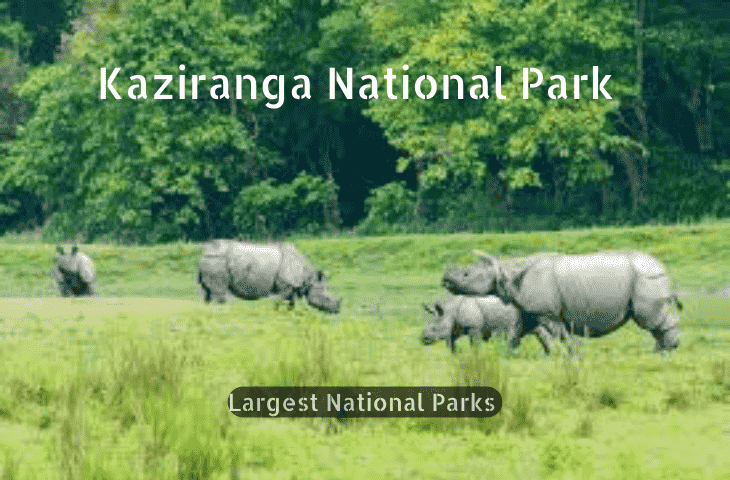
Located in Assam, Kaziranga National Park was declared a national park in 1974 and a tiger reserve in 2007. It is a UNESCO World Heritage site and an Important Bird Area, recognized for its population of one-horned rhinos. The park spans 430 square kilometers.
- Bandipur National Park
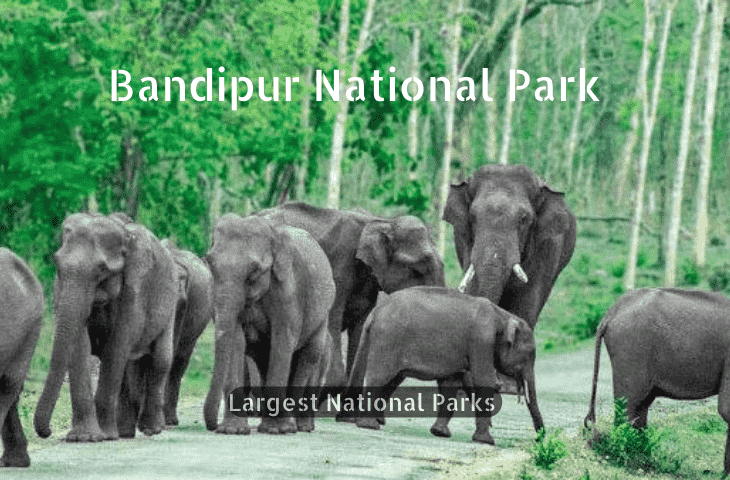
On the Karnataka border, Bandipur National Park was established in 1973 under Project Tiger. Covering 872 square kilometers, it is part of the Nilgiri Biosphere Reserve and is home to the largest population of wild Asian elephants in South Asia.
- Sundarban National Park
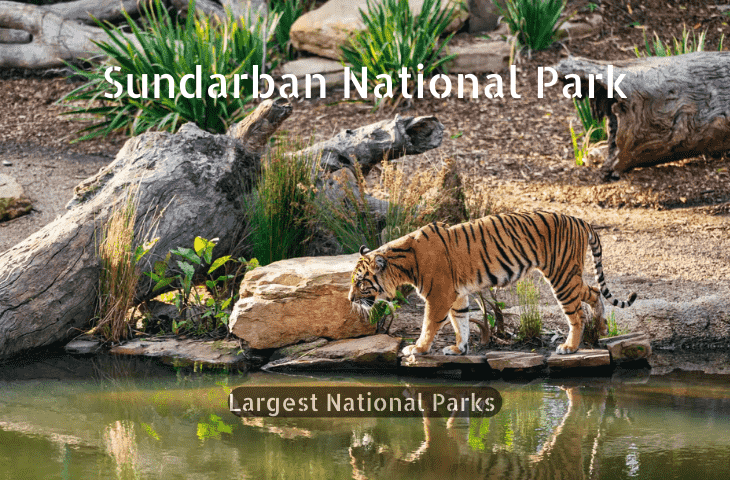
Located in West Bengal, Sundarban National Park is the third-largest in India and the world’s largest delta. Declared a national park in 1984 and a UNESCO World Heritage Site in 1987, it covers 1,330 square kilometers and is known for its mangrove forests and diverse bird species.
Also Read:- The 20 Best Sci-Fi Movies on Netflix (Aug. 2024)
- Sariska National Park
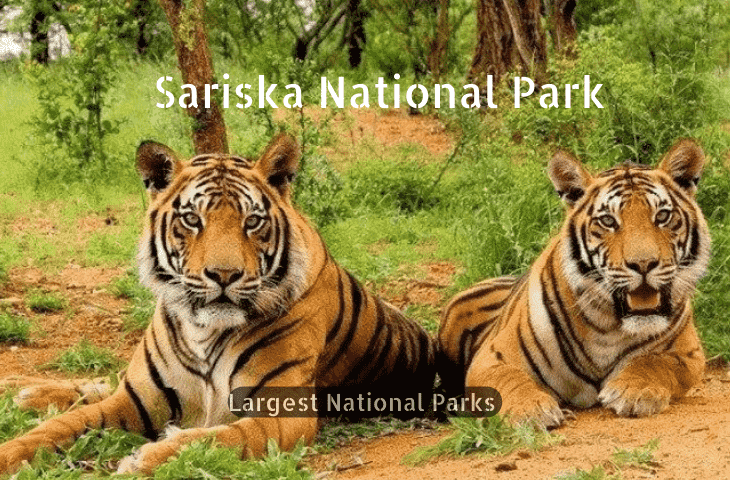
Situated in Rajasthan’s Alwar district, Sariska National Park was declared a wildlife sanctuary in 1955 and became a tiger reserve in 1978. It covers 881 square kilometers and is home to the Royal Bengal Tiger and diverse habitats including scrub-thorn arid forests and rocky hills.
- South Button Island National Park

As the smallest national park in India, South Button Island National Park in the Andaman & Nicobar Islands covers just 5 square kilometers. Established in 1987, it is a popular tourist destination for its marine life and coral reefs.
- Hemis National Park
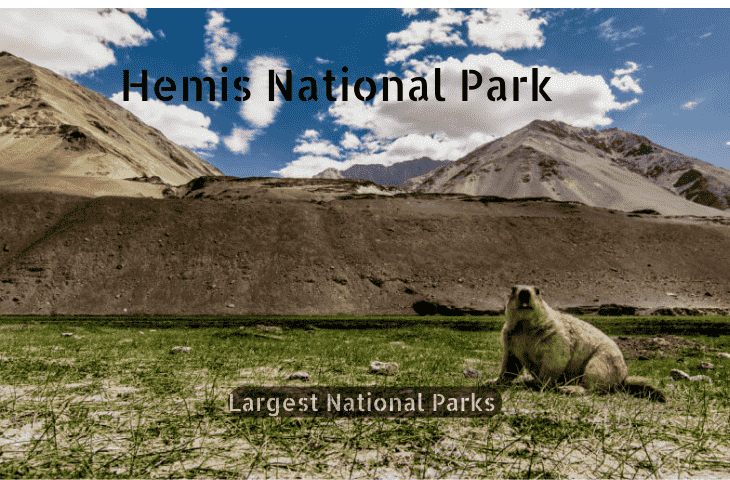
Located in Ladakh, Hemis National Park is renowned for its snow leopards and is the only park north of the Himalayas. Covering 4,400 square kilometers, it is the largest park in India and one of the largest in South Central Asia.
Also Read:- Top 10 Dangerous Sea Routes in the World 2024
- Kuno National Park

Situated in Madhya Pradesh, Kuno National Park was upgraded from a wildlife sanctuary to a national park in 2018. Covering 750 square kilometers, it is named after the Kuno River and is the site for reintroducing cheetahs from Namibia.
Importance of National Parks
National parks play a crucial role in a nation’s environmental and cultural preservation. Here’s why they are so important:
- Conservation of Biodiversity: National parks safeguard diverse ecosystems, protecting flora and fauna from human interference, and preserving them for future generations.
- Habitat Protection: These parks offer a refuge for various species, contributing to the survival of endangered and endemic wildlife.
- Water Conservation: National parks often protect vital watersheds, ensuring a clean and sustainable water supply for both wildlife and nearby communities.
- Climate Regulation: Forests in national parks absorb carbon dioxide and release oxygen, helping to mitigate climate change and maintain global ecological balance.
- Economic Boost: National parks attract tourists, providing economic benefits to local communities through tourism-related activities such as lodging, dining, and shopping.
Conclusion – Largest National Parks in India
India’s national parks, whether they are vast like Hemis or compact like South Button Island, are vital for conserving biodiversity and promoting sustainable ecotourism. These protected areas not only provide sanctuary for wildlife but also offer opportunities for people to connect with and appreciate the natural beauty and cultural heritage of the country.
FAQs on the Largest National Parks in India
1. What are the Top 5 National Parks in India?
The most visited national parks in India include Jim Corbett National Park, Kaziranga National Park, Sundarbans National Park, Gir National Park, and Ranthambore National Park. Mudumalai National Park is also a well-known park in India.
2. Which is the First National Park in India for UPSC?
Jim Corbett National Park, located in Nainital, Uttarakhand, holds the distinction of being India’s first national park. It was originally named Hailey National Park.
3. What is India’s Largest National Park?
Hemis National Park, located in Ladakh, is the largest national park in India. It was established in 1981.
4. Which is the Smallest National Park in India?
South Button Island National Park, situated in the Andaman and Nicobar Islands, is the smallest national park in India.
5. Which is the Oldest National Park in India?
Jim Corbett National Park, established in 1936 in the Nainital District of Uttarakhand, is the oldest national park in India.


